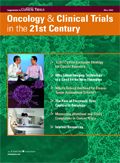EDC Possibilities in Oncology
Functional challenges aside, electronic data capture can improve cancer clinical trials.
Oncology compounds comprise about one third of the development projects in the pharmaceutical and biotech industry (see Figure 1). The features of oncology projects, while not unique to this therapeutic area, do create unique challenges and opportunities in clinical study management. These clinical programs often have a number, if not the majority, of studies done with an open label design. This allows the sponsor to make the most out of the near real-time information that comes with an EDC study.

PHOTOGRAPHY: JIM SHIVE
Oncology therapies are often toxic and the subjects involved in their trials are often chronically ill. Also, the ultimate utility and optimal combinations of these drugs may not be understood fully until after a number of postapproval studies are completed. These studies will often be conducted outside of the sponsor's control. EDC may be helpful in assisting the sponsor to become more aware of the conduct and outcome of Phase IV studies.

Figure 1. A breakdown of the number of Phase IâIII trials conducted for various conditions.
As I will discuss, these and other challenges make using EDC not only desirable but also indispensible in doing work in the oncology area.
Operational challenges
EDC in oncology has a number of functional challenges that must be addressed in order to fully utilize its potential. Among these challenges are study design issues, capturing measures of study efficacy, study safety monitoring, and the management of study logistics. Even simple dose escalation designs in oncology studies are compounded by complex stratifications such as prior therapy or specific indicators. These indicators may be as routine as baseline or treatment emerging platelet and white blood counts or as complicated as experimental tumor markers. Dose escalation within cohorts may also be dependent on a number of host or tumor response criteria. Pre-arranged study rules can optimally ensure subject safety as well as maximize the information learned from the study. These rules may result in data-driven dynamic study visit designs for multicycle visit schedules.
Sophisticated EDC systems can accommodate these variations and can also allow for dynamic and "morphing" case report forms. It is also possible that patients can be enrolled in multiple complex treatment groups depending on the study conduct. Adaptive study designs with creative statisticians and configurable EDC systems are required in order to do this properly. It is also extremely helpful to have an integral drug grouping assignment tool—whether delivered by a telephonic interactive voice response (IVR) technology or whether configured directly into the EDC study software.
When imaging data are being collected, it is also optimal to integrate the logistics of the imaging data with the rest of the clinical trial data.
Assessing study efficacy
The fact that many if not most oncology studies are open label allows sponsors to have much greater insight into the efficacy of their compounds than a double blind study. Ongoing determinations of efficacy are certainly useful and are the norm with real time data displays. Efficacy by subgroup (i.e., tumor biology, patient history, dose level, dose duration, drug combination, etc.) can be determined earlier than with paper and, as noted, can be important in adaptive designs. This feature has important practical issues, particularly with lightly capitalized single-product companies, as data are critical to raising additional funding. The faster the data are available, the more easily small companies can garner venture funding for their work.

Rationale for EDC in Oncology
As a derivative of having real time data, real time calculations of tumor response such as RECIST scores (Response Evaluation Criteria in Solid Tumors) can also be displayed as soon as data are available following blinded reads. Sponsors are able to empower experts to review and analyze data in real time. Further, interaction and importing data from third-party image analysis experts can also be done in near real time for confirmation of the data. Finally, a very frustrating source of queries when performing oncology studies with paper data collection is overlooking a target lesion. Sometimes these data cannot be retrieved if the proper imaging modality was not performed at the appropriate time. The best EDC systems in oncology are specifically focused on this issue and make it impossible to forget the evaluation of an indicator lesion. When the EDC database is coupled with the image analysis database from the outset, it is logistically much easier to ensure the timeliness and completeness of the image data.
Subject safety
Helping to ensure subject safety is probably the most compelling reason to use EDC in oncology studies. The studies are complicated and frequently long—and sometimes will feed into another study. As mentioned, the subjects are often chronically ill or will become so during the duration of the investigation. The study medications often have a very narrow therapeutic index and their tolerability in any individual subject may be determined by a number of factors besides simply the dose and duration of treatment. Finally, with the dual trends of recruiting large numbers of sites and having many of those sites outside the United States, using EDC technologies becomes critical if the sponsor has any hope of understanding treatment emerging events during the study.
Besides a more "macro" approach to ensuring patient safety, EDC offers a number of other advantages that should be highlighted. Reporting adverse experiences in oncology studies may be carried out in a number of ways. Using the National Cancer Institute's Common Terminology Criteria for Adverse Events (CTCAE), or the older Common Toxicity Criteria (CTC), and potentially also continuing to code in the Medical Dictionary for Regulatory Activities (MedDRA), these dictionaries can be linked to the appropriate auto-encoder software. The most sophisticated electronic data management companies are capable of managing this and streamlining the coding process.
Another huge advantage with EDC is the ability to better visualize the concurrent medications (ConMeds) the subjects have been given. While this is a frequent source of data queries in a paper-based process, this is not the case with the appropriate EDC environment, where the software will require full accounting for these medications.
Sponsor notifications can also be set up to send alerts when specific events occur. By setting up alert notices ahead of time, sponsors can be assured they will be notified of conditions of interest whether favorable or unfavorable in real time.
Study logistics
As mentioned, two trends that seem to have emerged in drug development are a greater need for larger studies and a greater emphasis on placing sites outside the United States and Western Europe. Also, as we acquire a greater understanding of tumor markers (how they might affect treatment response and how other individual patient characteristics may impact therapy), there will be a greater need to stratify studies to balance these characteristics. These factors make eligibility criteria more restrictive and will make studies more difficult to enroll.
EDC technologies and real-time data display can both temporally and geographically unify the study environment, wherever the sites are located. Study operations data, such as site qualification administration, enrollment and randomization, image capture verification, grant payment data, and clinical trials supply data, flow rapidly and ensure that the study runs smoothly. Specific randomization algorithms and clinical dosing packets can be controlled with the EDC software. A unified randomization system (whether via telephonic IVR or computer-based) can be modified as the study needs demand. Further, since enrollment and subject randomization logs can be monitored in real time, adjustments may be made to eligibility criteria or study design to improve enrollment and ensure that the study is completed.
EDC technologies also allow subjects and their full data sets to roll over seamlessly from shorter studies to longer studies if the clinical development plan requires this. In a similar manner, subjects can be transferred from one site to another if needed. Also, since many oncology studies are done in academic centers, site staff are both accustomed to using EDC technologies and actually expect them to be used.
EDC in oncology
To run oncology studies optimally, a number of EDC technology features have to be part of the system. Certainly the system should have excellent responsiveness and speed needed to perform complex edit checks on the data collection forms. This generally implies that the edit checks can "fire" in real time. Flexibility and study rapid modification and validation may be necessary to handle adaptive study designs and the changes in the study that come as a result of emerging data, such as additional cohorts, changes in study size, additional visits or trial extensions. Fully integrated IVR or computer-based randomization linking directly with the study database will be needed to manage patient enrollment and treatment allocation, particularly if they are modified during the study.
In terms of capabilities, the EDC system should be able to:
- Accommodate lab imports, both central and university labs, in a manner compliant with 21 CFR Part 11, which generally means that lab data should be collected in the system and not entered on noncontrolled electronic spreadsheets
- Allow for the viewing of lab data in real time, along with all of the other data, including selected imaging derived data
- Include patient logs as a feature and couple this with real-time data display that is accessible for all data at any time
- Allow for bar coding input for large volumes of samples and be flexible so that a variety of users (under the sponsor's permission with password control) have access to the data.
As mentioned, two features that are must-haves with oncology studies are modules to track and compare indicator lesions and modules to track ConMeds and adverse events. These should be internal to the system, as they are critical in reducing the number of data queries in oncology studies.
In addition to the EDC system, the reporting technologies are also extremely important in gaining the most from the oncology study. The reporting system should be customizable and easily configured to provide rapid interim data snapshots. Data summary displays and patient outcome reports can shorten the eventual reporting time and can speed clinical decisions. Finally, the system and the reporting structure should have an "event notifier" that provides a specific report to the sponsor or the sponsor's agents should an event occur (such as a serious adverse events, a complete response or some other event of particular interest) that is important.
Maximizing the benefits
If the EDC vendor has a variety of other integrated data related services (e.g., IVR, data management, clinical safety, image analysis or statistics), it becomes much easier to maximize the full potential of EDC technology. Staff are completely familiar with navigating the complexity of oncology studies in the system on which they are working (which may be untrue for a CRO) and can more easily provide the sponsor with all the data the sponsor needs. Staff can also configure reports for both specialized data management and for integrated site management functions, such as grant payments. When the technology is fully utilized, it may also be possible for vendors to pass on their efficiencies to sponsors in the dual benefit of increased performance and cost reductions.
Benefits of vendor experience
EDC in oncology can provide a huge number of benefits over paper-based approaches. However, the EDC system and the services chosen are critical to realizing these benefits.
Not every EDC provider can provide all the features needed to maximize the clinical program. Vendor experience and the EDC system features designed for oncology studies are critical factors for success. The feature mix needed to optimize these studies is a lesson that is learned over years; and since not all EDC systems are alike, it is critical to ensure that the system to be used can be correctly characterized and has a proven ability to work within the oncology field.
William Claypool, PhD, is president of Phoenix Data Systems, 901 East 8th Avenue, Suite 201, King of Prussia, PA 19406, email: bclaypool@pdsedc.com
